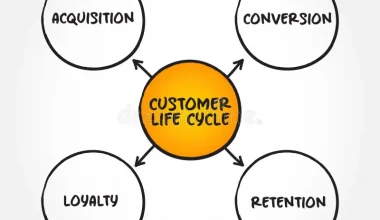Many elements, like a significant company mission, a good workplace culture, or a high income, can help keep workers motivated and engaged in their work. Implementing an employee incentive program is one way for businesses to assist foster engagement and high levels of performance. Programs like these have various advantages that may help the organization achieve greater success. In this post, we define employee incentive programs with examples, list their benefits, and offer some ideas for implementing one in the workplace.
What Are Employee Incentive Programs?
Employee incentive programs are any type of motivational program meant to reward or benefit employees. Such incentives are excellent coaching tools, as they increase engagement and help employees regain focus and drive.
These programs exist in a wide range of forms, and selecting the appropriate one helps both employees and the firm. It’s the epitome of a win-win situation.
Benefits of Employee Incentive Programs
The benefits of employee incentive programs are as follows:
#1. Improving Business Objectives
One significant advantage of an incentive program is that it stimulates greater performance in support of the company’s stated business objectives. Team members who are properly motivated are more likely to put in extra time and effort at work. In sales, for example, firm leaders can design an incentive program to motivate team members toward a specific sales objective. They might offer a $100 bonus to each member of a sales team if they meet the company’s monthly sales objective of $40,000 in a month.
#2. Improving Work Quality
Incentives can serve to improve the quality of work completed by a team. For example, a company could adopt a quality evaluation for specific projects and reward personnel who perform well. Some incentives encourage quick work above quality work. Implementing a quality-based reward procedure may be a good strategy to balance out the effectiveness of the incentive program while boosting the organization’s overall success.
#3. Boosting morale
An incentive program can make employees feel appreciated at work by demonstrating that their management has recognized the effort they have put in. Praise and rewards can help boost team members’ morale at work. Happier team members are more likely to be productive and to pass on praise and encouragement to other team members. This implies that everyone on the team may feel more valued for their efforts, which can have a significant beneficial impact on general workplace mood.
#4. Increasing motivation
Incentive schemes can help motivate employees for two reasons. First, the award itself provides an additional incentive to work hard and strive for greater success. If a team member is struggling to stay focused, providing a precise, attainable incentive might be an effective method to help them regain drive.
Motivation can also develop as a result of improved working morale. Team members who believe their superiors appreciate their efforts may be happier and more likely to work harder in the future. A track record of earned incentives and favorable feedback is strong proof for a raise or positive review. As a result, after getting an incentive, employees may feel encouraged to maintain a positive connection with firm management.
#5. Promoting collaboration
Incentives can be a great approach to promote teamwork and togetherness. This is especially true if management sets a collective incentive that requires everyone on the team to succeed in order for anyone to receive the reward. One example is when every member of a sales team receives a bonus if the department meets a specified number of interested clients. There are many extremely personal aspects of remuneration, such as income or perks, therefore managers should be aware of reward-based tactics that can inspire teamwork.
#6. Increasing participation
Incentive programs can bring a game-like sense of fun to the workplace, which can assist enhance team members’ engagement. This is especially handy for jobs that require repetition. Companies can inspire team members to think about their work with renewed enthusiasm by encouraging particular degrees of achievement. You can foster this atmosphere by using innovative means of scorekeeping, such as a wall-mounted customizable leader board.
#7. Increasing employee loyalty
Individuals who feel valued by their employers are more likely to be dedicated. Incentive programs can help businesses show their appreciation for team members, making them an effective tool for fostering company loyalty. Individuals who experience a sense of commitment to their organization are more likely to stay for an extended period of time. In this way, incentive programs can reduce turnover, allowing firms to build long-term, mutually beneficial relationships with their team members.
#8. Keeping talent
An incentive program can help firms retain outstanding employees by making them feel valued and appreciated. Those who are extremely good at their craft may have numerous job alternatives. The opportunity to work elsewhere with regular incentives may entice them to take that employment. This can also be a compelling cause for a brilliant employee to stay with a company for an extended period of time.
#9. Enhancing Corporate Culture
The common values, goals, and relationships that comprise an organization’s day-to-day work environment are referred to as company culture. Companies may inspire teamwork, loyalty, and a sense of pleasure in the workplace by implementing an incentive program. All of these may lead to a positive business culture, which may aid in increasing productivity and income.
Companies can establish incentives that especially target company culture. Consider developing a metric to assess how kind and helpful employees are to one another, and rewarding those who achieve the highest score. For example, you may set up a vote system in which team members select who they believe was the most positive contributor to the business culture for the month, and that individual receives a prize.
Examples of Employee Incentive Programs
When it comes to excellent employee incentive program ideas, there are numerous examples. Some of them are monetary in nature, while others are not. In this section, we’ll look at the many types of incentives and how they work:
#1. Incentive programs based on awards/rewards
A recent poll of employee happiness at work found that the majority of respondents desired more recognition at work in order to remain engaged at work. According to the same report, 37% of employees believe that recognition is the most important thing to them.
One of the greatest methods to offer your employees the appreciation they deserve is to implement an award-based incentive program that tracks their efforts in real-time and awards them various rewards based on their accomplishments.
One excellent approach to accomplish this is to use modern tools that make it simple to recognize employee performance and make people feel valued at work.
#2. Workplace programs that are suitable for remote/hybrid workers
This is a distinct category of incentive programs that includes rewards intended expressly for remote and hybrid workplaces. One of the most difficult aspects of these jobs is keeping staff interested and engaged.
As a result, using monetary and non-monetary incentives such as outdoor gatherings, shoutouts, and notes of appreciation can favorably improve workplace dynamics and increase employee engagement.
#3. Bonuses for referring others
A referral bonus is a sort of monetary incentive in which employees are rewarded for recommending or bringing in quality talent and job seekers to work for your firm.
#4. Profit sharing
Profit sharing is one of the most common incentive schemes, in which the firm pays the employee(s) when the company makes a profit.
This incentive strategy is quite adaptable and may be implemented in a variety of ways. It also offers the added benefit of increasing staff enthusiasm and productivity while harmonizing with the company’s long-term goals.
#5. Travel bonuses
Incentive travel is another excellent approach to encourage and engage your employees. It can take many forms, ranging from business trips and team-building retreats to fully compensated vacations in foreign countries.
Additionally, simpler forms of travel incentives may include hotel and airfare discounts, refunds, pocket money, free rental cars, and so on.
#6. Fringe Benefits
Employee benefits, often known as fringe benefits, are a sort of incentive that encompasses various types of non-wage remuneration and perks.
Paid vacation days, health insurance, child care, retirement plans, club memberships, and other goods that are or are not included in the pay package are among the most frequent.
#7. Incentive suggestion
Many businesses and organizations are willing to spend large sums of money to investigate and implement new ideas that will increase their success and profitability. Because your staff are aware with the inner workings of your company, their suggestions can be highly important, which is where suggestion incentives come in handy.
This one recognizes engaged and proactive individuals that propose novel approaches or out-of-the-box solutions to work difficulties. Some businesses are also focusing more on the engagement aspect of the proposals, as employees who feel valued have higher morale and productivity levels.
#8. Tuition aid
Tuition aid, sometimes known as “reimbursement,” is a sort of employee benefit in which the employee receives a predetermined amount of money in exchange for continuing or completing specific courses toward a specific degree or education credit.
These programs serve both sides since employers get to invest in the company’s long-term benefits by enhancing knowledge and loyalty, while employees get to develop and learn new methods that help them excel in their employment.
#9. Employee stock purchase schemes
The employee stock ownership plan, in which the employee gains an equity stake in the company for which they work, is another sort of employee perk that comes with a number of benefits.
The key benefit of this incentive scheme is that it aligns employees’ values with corporate goals while also promoting employee loyalty to the organization. It also contributes to higher staff retention and lower turnover rates.
#10. Incentives for participation and teamwork
This is a diverse form of incentive given when employers engage with their teams. This can take the shape of a basic employee or team bonus for being proactive and taking initiative, or for cooperating and assisting other team members in solving a difficult challenge.
These initiatives promote teamwork and encourage cooperation among your personnel. Using feedback tools such as Workhuman Conversations®, you can quickly track the amount of engagement.
Best Practices For Employee Incentive Programs
After deciding on the best employee incentive programs for your firm, you must put them into action. Here are some best practices for implementing effective incentive programs.
#1. Include everyone in your program.
Implement a variety of incentive programs to ensure that all team members have access to your reward programs. You should also recognize every stakeholder who contributes to the success of your incentive programs, as well as everyone who participates in them. Additionally, ensure that your incentive program has an interesting, user-friendly platform on which team members can readily engage and reap the advantages. All of these activities can make employees feel included and part of a welcoming workplace.
#2. Publicize your incentive schemes.
Make sure that everyone is aware of your incentive programs in order to raise awareness and encourage company-wide involvement. To do this, HR should develop a promotion and communications strategy to ensure that all employees are aware of the existing incentive programs. They can build on this by collaborating with leaders to create continuing campaigns that engage and retain staff. These campaigns may include marketing methods such as posters, amusing messages sent via company email or intranet, or games that relate to the incentives. Include information about your incentive programs in your employee onboarding checklist as well, so that every new recruit is educated from the start.
#3. Allow leaders to lead the way.
Leaders must set a good example by taking part in and advocating for incentive programs. After all, the effectiveness of employee incentive programs is dependent on leaders promoting and increasing awareness of incentive programs among their employees. Your HR department should educate leaders on how employee incentive programs function and the importance of employing them as engagement tools. This could include reference materials, training sessions, or webinars, as well as online learning courses. They can then successfully persuade their team members to participate in your company’s incentive schemes.
#4. Make your rewards unique.
It is critical to personalize your employees’ incentive experience. Team members will not work hard to achieve a goal if they are not compensated in a way that is relevant to them. While 56% of employees believe their employers should understand them as well as they are expected to understand their customers, only 39% believe their workplaces are meeting this goal.
Utilize technology such as artificial intelligence and advanced analytics to begin personalizing each employee’s experience. Some HR directors are uncovering employee needs through HR hackathons, employee journey mapping, and design thinking. Of course, soliciting feedback from employees is the most effective approach to customize their rewards.
#5. Request feedback
The only way to get reliable feedback on your incentive programs is to listen to your staff. Take the time to assess how well your present rewards are being accepted and to learn more about what your staff truly desire.
Use an employee feedback platform that allows you to conduct pulse surveys to begin listening. Employees can contribute ideas you wouldn’t have thought of otherwise, and they’re your best source for learning what types of employee incentive programs would have the greatest impact. Consider an always-on feedback channel that allows employees to provide comments at any time and from any location.
Customize your reward programs depending on employee feedback to show that you care about and value their input. Then, use employee engagement surveys to ensure that your changes are having a positive impact. It’s also a good idea for leaders to schedule meetings with their teams to go over survey results and develop joint action plans.
What Are the Three Types of Incentives?
Economic incentives, social incentives, and moral incentives are the three categories of incentives.
What Is the Difference Between an Incentive and a Bonus?
The primary distinction between a bonus and an incentive is that bonuses are often awarded in response to short-term goals or as a post-event present. While incentives are often distributed in response to long-term goals, they are frequently articulated and implemented in advance.
Who Benefits from Incentive Pay?
Employees and employers both profit from incentive schemes.
Is Incentive A Bonus Or Part Of Salary?
Incentive pay differs from base salary in that it is intended to encourage—it is not a required form of payment by the employer, nor is it a bonus provided to the employee.
How Is Incentive Pay Paid?
Your employees can get incentive compensation in the form of cash or non-monetary bonuses.
In Conclusion,
Employee incentive programs that are effective may keep your employees motivated and engaged. As previously stated, incentives do not always have to be monetized; non-monetized incentives can be just as effective.
Related Articles
- SALES COMMISSION SOFTWARE: The 2023 Best Options With Reviews
- EXECUTIVE COMPENSATION: What Is Executive Compensation
- WHAT ARE INCENTIVES?
- Customer Loyalty Programs & Ideas (+Top Rated Programs in 2023)






